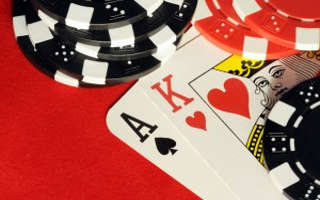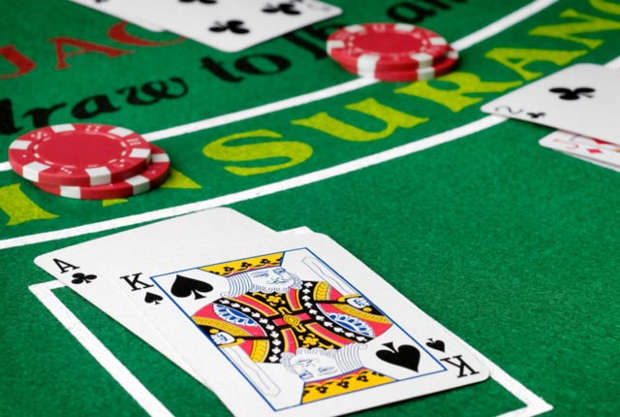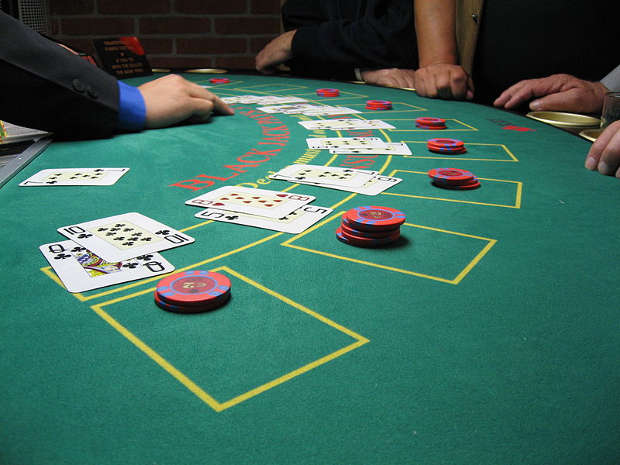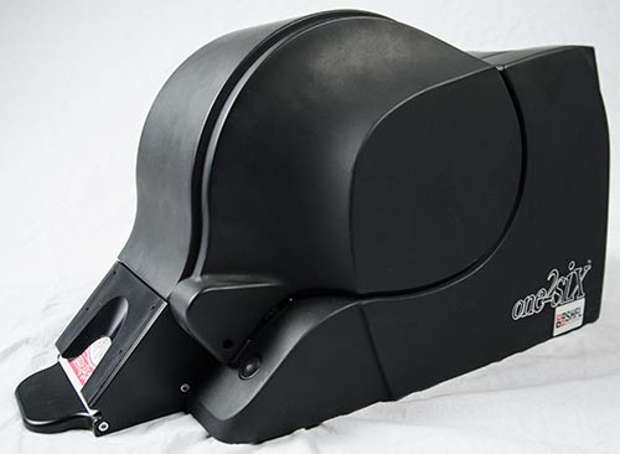How To Play Winning Blackjack

Blackjack is hands down the most popular casino game. Depending on the rules of the game players can enjoy a low house edge of between 2% to 7%.
By learning a card-counting strategy savvy players can use the game to their advantage. The rules of blackjack differs from casino to casino and from table to table. While most players will simply plop down at the table, seasoned players will search for the game with the best rules. Does the disparity of the game differ from one game to another? Yes. The difference between the best and worst games are as follow:
| Rule | Barona | Rio |
| Decks | 1 | 1 |
| Blackjack Pays | 3-1 | 1-1 |
| Dealer soft 17 | Hits | Hits |
| Double any first two cards | Yes | Yes |
| Double after split | Yes | No |
| late surrender is allowed | Yes | No |
| House Edge | 0.2% | 2.5 |
| *Table illustration Courtesy of Michael Shackleford |
Blackjack Is For Smart Players
Not all the tables at the Borana and Rio are played according to the same rules. I’ve just highlighted the extremes in the table. If one has to compare the rules of yesteryear to that of the modern game, I’d say that the game has become tighter. The reason for this is that most casinos now hit on a soft 17-this rule strongly favors the casino.
Michael Shackleford states that this rule has become so prevalent that he now includes it in the standard blackjack game. This article will focus on the ”Las Vegas Benchmark Rules”.
What Are They?
- 6 decks.
- Dealer hits soft 17.
- The player can double on any first two cards.
- After the split the player may double.
- To make four seperate hands the player may split up to three times.
- Aces can only be split once and only one card is drawn to each split ace.
- Players are allowed to surrender.
Shuffling
A card game can be shuffled in three different ways:
- Hand Shuffle: This is the traditional shuffle performed by the dealer.
- Automatic shuffle: Shuffling is done by a machine which shuffles 1 to 8 decks at a time. Tables that use an automatic shuffler normally rotates two shoes of different colored cards. One is being played the other is shuffled.
- Continuous shuffle: The machine performs this shuffle by inserting discards randomly back into the shoe. The majority of the machines nowadays use five decks but some machines can use two to four decks. Basically it boils down to shuffling the cards after each hand. I’d like to point out that the shuffling method can have an effect on the house percentage.

The House Edge
If you use this strategy with the Las Vegas benchmark rules, the house edge hovers around one-half of a percent. Let’s have a look at the house edge of the basic strategy, the simple strategy and a not-so-good strategy. Have a look at the table bellow:
Blackjack Edge vs. Different Strategies
| Strategy | House Edge |
| Basic Strategy | 0.53% |
| Simple Strategy | 1.03% |
| Never double or split | 2.42% |
| Never Bust | 4% |
| Mimic the dealer | 5.67% |
One of the greatest blackjack players of all time; the late Peter Griffin studied 11,000 hands which he mentions in his book, Extra Stuff. He came to the conclusion that strategy mistakes cause the average player to lose an extra 1.4% beyond the house edge for basic strategy. This is why it’s important that players master the basic strategy of the game.
Rule Variations
As mentioned in my opening paragraph, the rules of blackjack varies from casino to casino. The most significant variations are in the number of decks being dealt-the fewer the decks the better. Some casinos might allow the dealer to stand on a soft 17, allow splitting or doubling down. Before you start playing look for games where the dealer stands on a soft 17 and uses two decks or less.
The 6-5 Payoff
The modern blackjack game tends to learn towards ”Single Deck Blackjack”. But some smaller signs often read ”Blackjack Pay 6-5”. A signle deck game pays 3-2 naturals and the house edge is 0.19%. However, on a 6-5 payout it will cost the player an additional 1.39%, when the house edge is 1.58%. In some of the games a player with blackjack always wins which lowers the house edge from 0.21% to 1.23%. Truth be told the 6-5 rule is a shoddy rule since it doubles even triples the house edge. My advice to you, don’t play this game.

Strategy
Blackjack strategy varies from basic by mimicking the dealer plays to powerful counting techniques such as the Hi-Opt II system. Let’s have a look at the simple strategy and the basic strategy.
The Simple Strategy
The following simplified strategy indicates how to play most blackjack hands. Let’s assume the house edge with this strategy is 0.93% against the benchmark Las Vegas Strip rules:
- Against the dealer stand on hard 12-16.
- Against the dealer double on 10,11.
- Always split aces, eights and nines.
- Stand on a soft 17, 18 or more. If rules 1 to 5 don’t apply, hit and never take insurance.
The Basic Strategy
This is the foundation of playing solid blackjack. In September 1956 it was first published in the Journal of American Statistical Association. Over the years it appeared in numerous gambling magazines and memorized by thousands of blackjack players.If you want to use this strategy, look up your hand along the leftmost column and the dealer’s up-card along the top. An ‘A’ stands for ace in both cases. The hand totals are from top to bottom, hands that can be split and soft totals. Soft hands include an ace and can’t be busted by drawing a single additional card. Soft hands are A, 3, 4.
The basis strategy (see below table) is designed specifically for the benchmark Las Vegas Strip rules. Always hit hard on 8 or less, always stand on hard 18, 19 or more.

* Image courtesy of Balltech.com
Shufflers
Although most players don’t like continuous shufflers, they actually reduce the house edge. The reason for this is that on average more large cards come into play and large cards favor the player. The house edge is reduced by 0.03% in a 5-deck game. A game that has more hands dealt per hour normally results in a greater expected loss given the same amount of playing time. This is why it’s pointless trying to count cards in a continuous shuffled game.
Side Bets
When playing blackjack, never make a side bet. The only exceptions are progressive-based side bets when the meter reaches unusually large amounts-it happens once in a blue moon. Side bets traditionally carry high house edges.
Card Counting
Unless a player has mastered basic strategy, card counting is virtually impossible. Reason being the edge gained by counting is smaller that the edge lost as a result of poor play. The theory behind card count is that a deck with tens and aces is good for the player. When the deck is laced with these proportionally good cards, the player must bet more. As the cards are dealt, the counter keeps tabs on the cards played, it also gives him information about what’s left in the deck.
It stands to reason that card counting is no cake walk. It’s a time-consuming process and only yields 1% to 1.5% edge under the best of conditions. Due to the inherent volatility of the game card counters can lose their entire bankroll in no time. If card counting was an easy way to make money everybody would be doing it.
Conclusion
Most gambling experts agree that blackjack is hands down the best game in the casino. Aside from bad games paying 6-5 on naturals, the house edge is always less than 1% with basic strategy. Blackjack is a fun and interactive game to play with a relatively low volatility. Smart players can gain an edge through card counting.
Source
Gambling 102: The Best Strategies for All Casino Games by Michael ”The Wizard of Odds’‘ Shackleford
[addtoany]
0 Comments
Be the first to comment